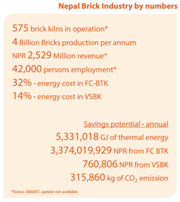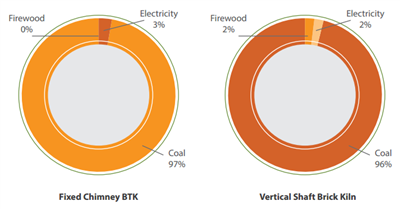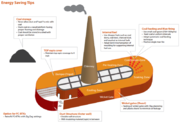Knowledge fuels change - Support energypedia!
For over 10 years, energypedia has been connecting energy experts around the world — helping them share knowledge, learn from each other, and accelerate the global energy transition.
Today, we ask for your support to keep this platform free and accessible to all.
Even a small contribution makes a big difference! If just 10–20% of our 60,000+ monthly visitors donated the equivalent of a cup of coffee — €5 — Energypedia would be fully funded for a whole year.
Is the knowledge you’ve gained through Energypedia this year worth €5 or more?
Your donation keeps the platform running, helps us create new knowledge products, and contributes directly to achieving SDG 7.
Thank you for your support, your donation, big or small, truly matters!
Difference between revisions of "Nepal - Energy Efficiency in Industry"
***** (***** | *****) |
***** (***** | *****) |
||
| Line 17: | Line 17: | ||
<div></div> | <div></div> | ||
= <span style="font-size: 0.85em; line-height: 1.5em;">Industrial Sectors</span><br/> = | = <span style="font-size: 0.85em; line-height: 1.5em;">Industrial Sectors</span><br/> = | ||
| + | |||
== <span style="font-size: 0.85em; line-height: 1.5em;">Brick Sector</span> == | == <span style="font-size: 0.85em; line-height: 1.5em;">Brick Sector</span> == | ||
| − | |||
| − | |||
| − | |||
| − | |||
| − | |||
| − | |||
| − | |||
| − | |||
| + | '''Sector highlights'''<br/>Brick <span style="line-height: 1.5em; font-size: 0.85em;">is a primary construction material in Nepal. Around 575 Brick kilns are in operations (Status 2006/2007) having a production capacity from 15,000 to 50,000 brick per day. Most of them operates only during dry season from December to June. Clay is the main raw material used in this industry and is available at very low cost. However, brick making is an energy and labour intensive industrial process. Hand moulding of green brick is mostly use</span><span style="line-height: 1.5em; font-size: 0.85em;">d. The predominant kiln technology in Nepal is the Fixed Chimney Bull Trench Kiln (FC-BTK). Apart from BTKs, Clamp Hoffmann and Vertical Shift Brick Kiln (VSBK) can be also found.</span> | ||
| + | [[File:Nepal brick industry by numbers.PNG|thumb|left|180px|Nepalese brick industry by numbers]]<br/> | ||
=== '''Energy Use''' === | === '''Energy Use''' === | ||
Revision as of 07:21, 13 May 2014
Overview
Although, Nepal has the second largest hydropower resources in the world, it is still suffering from high energy shortage since several years. This power crisis has resulted in scheduled power outages (called load shedding) up to 12 hours per day in the dry season when the run-off-the-river hydropower plant cannot meet the electricity demand.
Particularly, industry is suffering because they have to shut down during load shedding or to run costly fuel based backup systems. The import of petroleum product has increased sharply during the last decade resulting in a trade deficit with India.
However, energy is scarce and expensive it is often not used efficiently and wasted. This article gives an overview about energy saving potentials in eight energy-intensive sectors of Nepal, namely:
- Brick,
- Cement,
- Cold Storage,
- Food & Beverage,
- Hotel,
- Pulp & Paper,
- Soap, and
- Steel & Metal.[1]
Industrial Sectors
Brick Sector
Sector highlights
Brick is a primary construction material in Nepal. Around 575 Brick kilns are in operations (Status 2006/2007) having a production capacity from 15,000 to 50,000 brick per day. Most of them operates only during dry season from December to June. Clay is the main raw material used in this industry and is available at very low cost. However, brick making is an energy and labour intensive industrial process. Hand moulding of green brick is mostly used. The predominant kiln technology in Nepal is the Fixed Chimney Bull Trench Kiln (FC-BTK). Apart from BTKs, Clamp Hoffmann and Vertical Shift Brick Kiln (VSBK) can be also found.
Energy Use
Coal is the main energy source used in the brick kilns in Nepal and is mostly imported from India. Small amount of sawdust, fire wood and bagasse are sometimes also used as fuel. The energy cost on product value is 32% for FC-BTK and 14% for VSBK.
Energy Saving Potential
Thermal energy savings in Nepal’s brick sector is estimated to be 34% for the FC-BTK kiln technology and 4% for VSBK. It is estimated that brick kiln owners could save a total amount of NPR 3.45 Million every year by implementing energy efficiency measures.
Cement Sector
Cement is a commonly used as a basic building material in the country. About 70% of the cement used in the construction sector is manufactured in Nepal. There are two types of cement factories, namely, limestone-based and clinker-based. Limestone-based industry use the raw material limestone, that is abundantly available in Nepal, and burn the clinker and process the clinker to cement. Clinker-based factories import the clinker from India and process it to cement. There are more than 60 cement industries in Nepal; most of them clinker-based. Few new large units have a production capacity between 900 to 1,000 tons per day are in pipeline.
Figure: Nepal Cement Industry by numbers
Main source of energy used in Cement factories is electricity and coal. Limestone-based units use coal for calcination. Clinker-based units use mainly electricity for grinding. Limestone-based cement plants is very energy-intensive with about 48% of energy cost on production value. In clinker-based units on 5% of the cost is due to energy.
Figure: Energy use in cement industry in Nepal
Table: Specific energy consumption in Nepalese brick sector
Saving potentials are estimated to be around 41% and 49%, respectively for limestone and clinker-based industry. In total Nepalese cement units could annually save about NPR 1.5 Billion by using energy-efficient technologies.
Figure: Annual monetary saving potential in cement sector of Nepal
Figure: Energy saving tips for cement industry
References
- ↑ NEEP, 2012: Baseline Study of Selected Sector Industries to assess The Potentials for more Efficient use of Energy. Prepared by PACE Nepal for Nepal Energy Efficiency Programme (NEEP) of the Water and Energy Commission Secretariat (WECS), supported by German Development Cooperation GIZ. Retrieved from: http://wecs-neep.gov.np/downloadthis/120220_baseline_report.pdf























